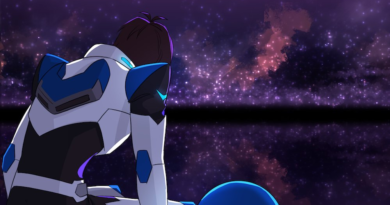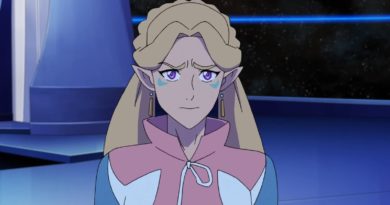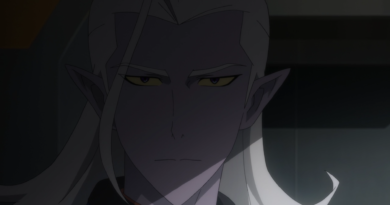A VLD Production Timeline
A common view I often see expressed in the Voltron: Legendary Defender fandom is that the production of the series was rushed. This stems from the fact that the entire series was released on Netflix within two and a half years, with as little as 2 months passing between new seasons dropping on Netflix. In debates among the fandom regarding the legitimacy of the final season being the showrunners’ true endgame, this timetable has been used to argue that the season couldn’t have been edited in such a short period and was therefore the creative team’s plan all along. I would like to address this point, but in order to do that, I first need to correct some common misconceptions about the pace of VLD’s production.
Background:
What a lot of people may not realize is that an animated TV episode is produced up to a year or more before the audience ever sees it on their screens. Netflix broke up the seasons the way they did in order to get audiences “more Voltron more often, so we don’t have to wait so long between each drop[1],” but this doesn’t mean that the episodes were being made in an equally short time-span.
While Netflix chose to release Voltron episodes over the course of two years, production began between April and June of 2014[2][3], and by the time Season 1 dropped on June 10, 2016 production had been completed up to at least Season 4[4].
On average, the production of an animated series is typically 1-3 years ahead of the episodes that are broadcast.
For example, work on Star Wars: The Clone Wars in 2005[5], but the first episode of Season 1 did not air on Cartoon Network until 2008.
The DuckTales reboot premiered in 2017 but production started back in 2015[6].
The development of an animated show is generally broken up into three stages
- Pre-Production: Scripts are written and finalized. Character and layout designs completed. Storyboards made for each episode to plan out shots.
- Production: Episodes are voice acted and then animated once voicing is finished.
- Post-Production: Music and sound effects added. Individual scenes stitched together into a complete episode. Color correction done as needed.
Due to the different tasks involved there is a great deal of overlap where different episodes or even seasons are being worked on in different stages of the process at the same time. For example, at the same time that the Legend of Korra was doing post-production for Season 2, production of Season 3 was already underway and Season 4 was entering pre-production at the same time[7]. The production of Star Wars: The Clone Wars followed a similar pattern, with pre-production of what would have been Seasons 7 and 8 being underway while Season 6 was being animated at the time of the show’s initial cancellation. Here’s a chart to help visualize what the process generally looks like:
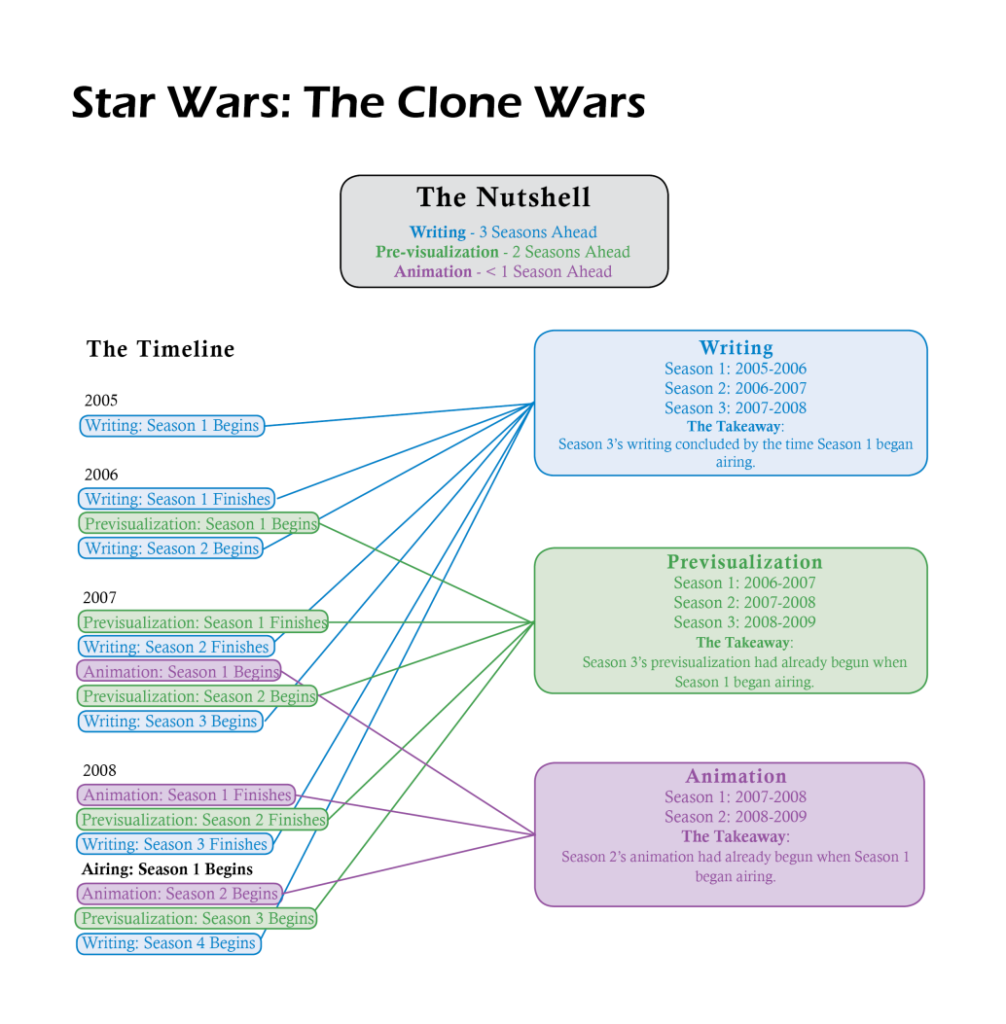
[A huge thank you to @CrystalRebellion for putting this chart together]
Another thing that some fans may not be aware of is that there is a difference between a broadcast season and a production season. Episodes of an animated show are produced in batches that do not always correspond to how they are presented to the audience. For example, episodes of Star Wars: The Clone Wars were produced in batches of 25-26, but the first four seasons to air on Cartoon Network were only 22 episodes each. In every season there were an average of 3 episodes that had been created as part of a separate batch[8]:
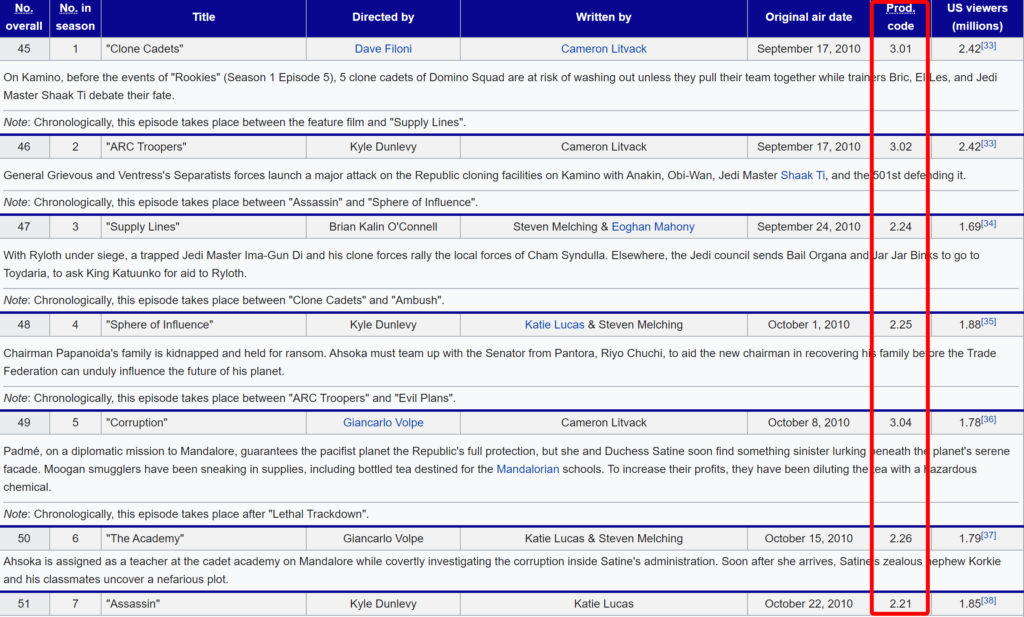
Legendary Defender’s Production:
Voltron: Legendary Defender was contracted with Netflix for a total of 78 episodes. Though they were released as 8 seasons (6 13-episode arcs), they were produced in batches of 26. Seasons 1-2 on Netflix are considered Production Season 1. Seasons 3-6 are Production Season 2. And Seasons 7-8 are Production Season 3. This fits with the voice actors for the MFE pilots – who were introduced in Season 7 – mentioning in an interview with Let’s Voltron podcast that the lines they recorded for their characters were supposed to be for the third season[9].
At some point during the production of Seasons 7-8, changes were ordered to the season that resulted in more work for the animators, resulting in the creation of S7E04 The Feud as a filler episode with limited animation to give the animation team a break. As a byproduct of this, some episodes ended up being moved around from the order they were originally intended[10].
So with all of this in mind, the timeline of VLD’s production looks roughly like this:
2014
- Writing begins for Production Season 1 (Netflix Seasons 1-2) between April and June
2015
- Writing for Production Season 1 (Netflix Seasons 1-2) finished
- Animation for Production Season 1 (Netflix Seasons 1-2) begins
- Writing for Production Season 2 (Netflix Seasons 3-6) begins
2016
- Animation for Production Season 1 (Netflix Seasons 1-2) finished
- Writing for Production Season 2 (Netflix Seasons 3-6) finished
- 13 episodes of Production Season 1 released on Netflix in June as “Season 1”
- Animation for Production Season 2 (Netflix Seasons 3-6) begins
- Writing for Production Season 3 (Netflix Seasons 7-8) begins
2017
- 13 episodes of Production Season 1 released on Netflix in January as “Season 2”
- Animation for Production Season 2 (Netflix Seasons 3-6) finished
- Writing for Production Season 3 (Netflix Seasons 7-8) finished
- Animation for Production Season 3 (Netflix Seasons 7-8) begins
- 7 episodes of Production Season 2 released on Netflix in August as “Season 3”
- 6 episodes of Production Season 2 released on Netflix in October as “Season 4”
- Animation for first half of Production Season 3 (Netflix Season 7) finished
- Changes ordered to first half of Production Season 3 (Netflix Season 7)
2018
- 6 episodes of Production Season 2 released on Netflix in March as “Season 5”
- 7 episodes of Production Season 2 released on Netflix in June as “Season 6”
- Changes to first half of Production Season 3 (Netflix Season 7) finished
- Animation for second half of Production Season 3 (Netflix Season 8) finished
- Kimberly Brooks and Jeremy Shada called back into the studio in July to record new dialogue
- 13 episodes of Production Season 3 released on Netflix in August as “Season 7”
- The epilogue is created sometime in the fall
- Screencaps of the epilogue are leaked on the internet in October
- 13 episodes of Production Season 3 released on Netflix in December as “Season 8”
In June 2018, many of the show’s writers announced their departure from the production team. Because this occurred shortly after the last 7 episodes of the second production season were released on Netflix as Season 6, many assumed that this meant that the writers had no input on Seasons 7-8 and that this was the reason for the decline in the show’s writing quality. However this is observably false as the same writers who left are still credited in all episodes of the third production season. Most notably, Tim Hedrick is credited with S7E04 The Feud, one of the last episodes of Season 7 to be created.
The changes that resulted in the creation of The Feud would have happened after the scripts for the final production season were already finalized. This means that once those new episodes were complete there was nothing left for the writers to do before the remaining episodes dropped on Netflix. *That* is when the writers left: after their role in the production process was officially over. Not right in the middle of it like so many assume. Their job was done, so there was no reason to stay.
Conclusion:
Critics of the #FreeVLDS8 campaign claim that those involved, particularly Team Purple Lion, are saying that the entire season was reanimated, which is incorrect. If that were the case, the animators at Studio Mir would not have been surprised at the season we got in December 2018.
If you’re looking at this timeline and going “but there still wouldn’t be time for them to edit the season, you would be correct *if* you are only thinking in terms of new animation being created. Because if the editing of Season 8 was accomplished by new animation, there truly wouldn’t be enough time to make new animation for an entire season. And that’s because they didn’t.
So if there was no new animation, how was the editing done?
Exhibit A:
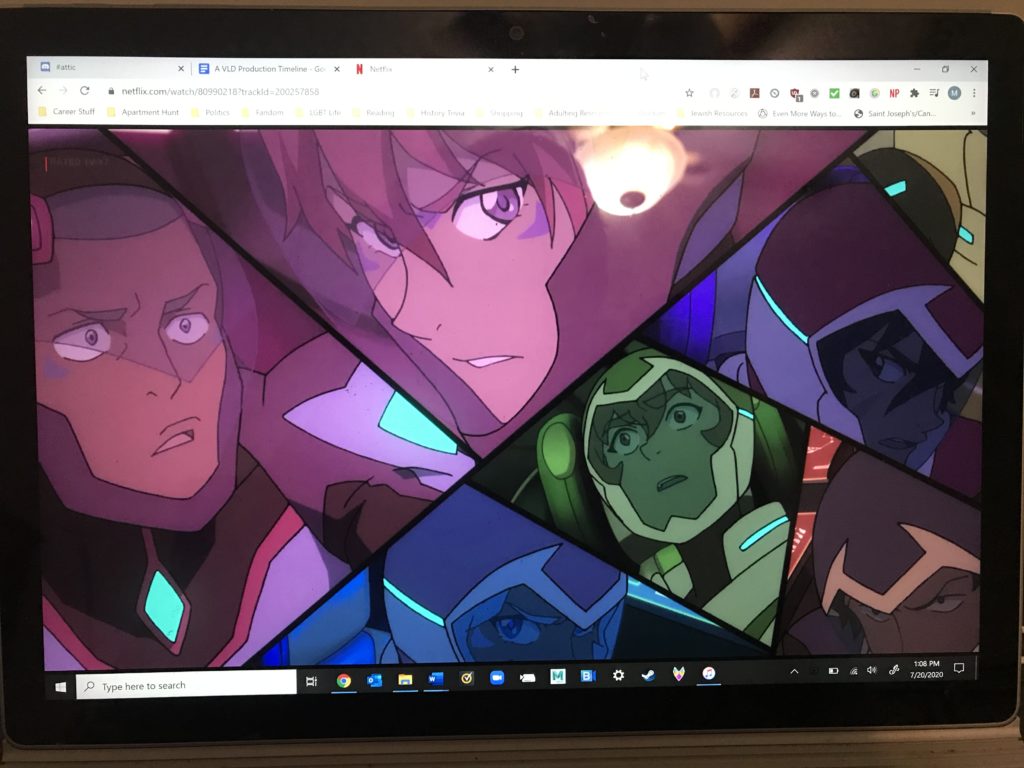
[Sorry for the glare from the ceiling lights in my bedroom.]
It was done by cropping the split screens. Taking out pieces of episodes. Using stock photos and static images to put characters in shots they weren’t originally there for. Dos Santos even mentioned cutting and pasting mouths from one character to another[11]. He claimed at the time that it was specifically for the epilogue, but that’s impossible because with the exception of Shiro’s kiss there was no movement in the epilogue whatsoever. (I refer you to @dragonofyang’s piece on NDAs[12] for more on how those early 2019 interviews were misleading). The only “new” animation as casual fans think of it would be places where one character is traced over another in a few key shots that had to be left in to meet the required runtime and ensure that the final season met the minimum number of episodes mandated by their contract with Netflix.
It is because there was no time to re-animate the entire season that Season 8 had as many visual and audio mistakes as it did. Post-production of the season would have already been finished by late June/early July of 2018. All the showrunners could do in the time they had was cut, paste, rearrange, and trace over in order to make sure this Frankenstein version of the season had at least the semblance of a coherent plot.
This is why supporters of FreeVLDS8 are so confident that an uncut version of Season 8 exists. Because production was already over when the editing happened, and it was done in such a way that the odds are in our favor that Mir and Dreamworks would have backup files of the original episodes archived on a computer somewhere.
Sources:
[1] Comic-Con 2017: Voltron Legendary Defender Season 3 is Only 7 Episodes But…; July 20, 2017. https://www.ign.com/articles/2017/07/20/comic-con-2017-voltron-legendary-defender-season-3-is-only-7-episodes-but
[2] Creating Voltron: Legendary Defender; June 10, 2016. https://www.denofgeek.com/tv/creating-voltron-legendary-defender/
[3] Tweet by Joaquim Dos Santos; October 12, 2018. https://web.archive.org/web/20200723131054/https://twitter.com/JDS_247/status/1050905860728213506
[4] Voltron Season 4 Episodes 1 & 2 Review w/ Joaquim Dos Santos, Lauren Montgomery, & Jeremy Shada; October 16, 2017. https://www.youtube.com/watch?v=80SejQPuS9E&feature=youtu.be
[5] “starwars.com at Comic-Con 2005”; July 12, 2005. https://web.archive.org/web/20080323023414/http://www.starwars.com/community/event/con/f20050712/indexp5.html
[6] DuckTales Cast Not Returning For Reboot; May 15, 2015. https://web.archive.org/web/20150526071332/http://www.behindthevoiceactors.com/news/Ducktales-Cast-Not-Returning-for-Reboot/
[7] Tumblr post by Bryna Konietzko; July 13, 2013.
[8] List of Star Wars: The Clone Wars episodes – wikipedia https://en.wikipedia.org/wiki/List_of_Star_Wars:_The_Clone_Wars_episodes
[9] Let’s Voltron, Episode 180: “MFE Pilots Interview with Anna Graves, Zehra Fazal & AJ LoCascio”; May 27, 2019. https://letsvoltron.simplecast.com/episodes/mfe-pilots-interview-with-anna-graves-z
[10] Voltron Legendary Defender Interview – The Garfle Warfle Snick Spectacular; October 24, 2018.
https://www.youtube.com/watch?v=XcJmq0sNGN4
[11] “Voltron Full Series Review with Showrunners in Studio”. Afterbuzz TV; March 4, 2019 www.youtube.com/watch?v=om_t8A99WJo
[12] From the Sock Puppet’s Mouth; March 27, 2019. https://www.teampurplelion.com/from-the-sock-puppets-mouth/
